Incredible food, bucket list historic sites, beautiful scenery… few things top an Italian getaway! However, timing a visit for optimal weather while also avoiding crowds can feel overwhelming. This guide details the best time to visit Italy to help you plan your adventure.
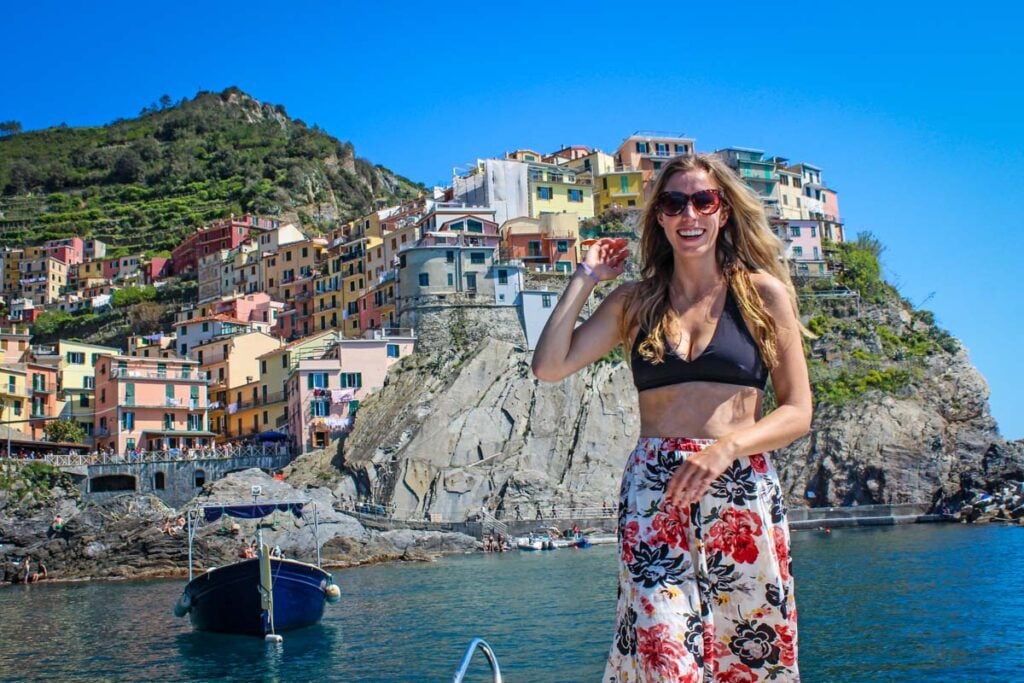
Whether you’re visiting to enjoy the mesmerizing landscapes, explore the ancient cities, or taste your way through the country, Italy is always a good time. That’s La Dolce Vita, “the sweet life!”
However, the best time to visit Italy isn’t necessarily cut and dry. For example, summer seems like the logical overall season for a dream trip, right? Not so fast — it also means sweltering heat and heavy crowds.
If you’re feeling a bit lost, you’re not alone. Luckily, we’re here to give you all the details on the best time to visit Italy. Let’s get into it!
When is the best time to visit Italy?
Shoulder season is the best time to visit Italy — particularly the months of April, May, September, and October.
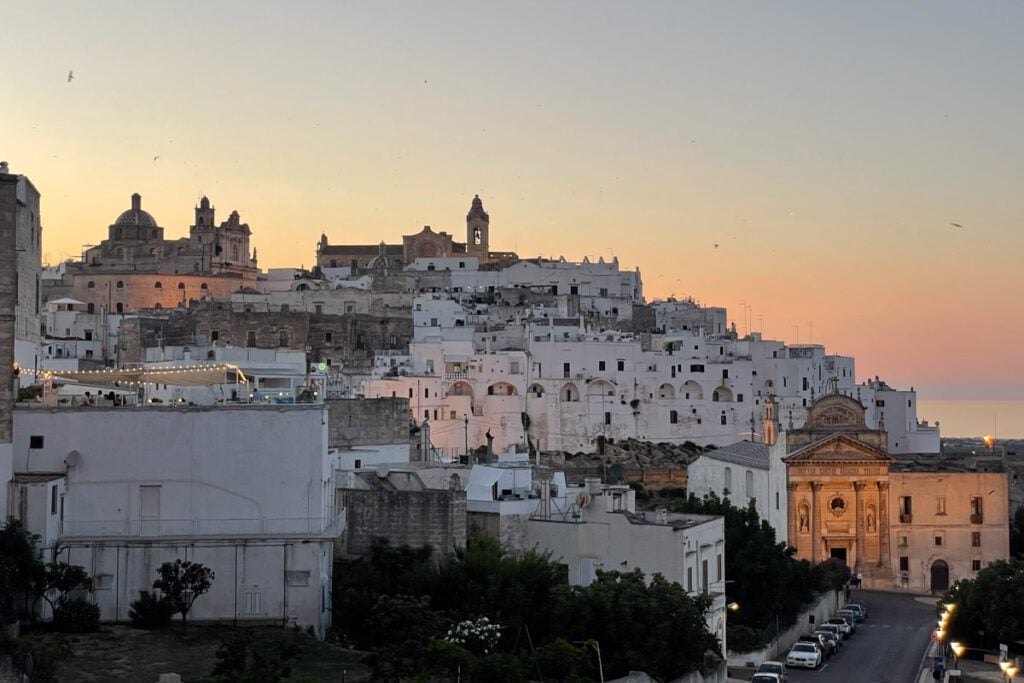
During these months, visitors enjoy pleasant temperatures, frequent sunny days, and attractions that aren’t overly crowded or overpriced.
Of course, the very best time to visit also depends largely on the type of experience you’re seeking. It’s hard to top a summer Italian beach holiday, and a wintertime trip to visit Christmas markets or go skiing is undeniably magical. We’ve outlined all four seasons below; keep reading to find out the best time to visit Italy for yourself.
Answer these questions to get started:
- What region of the country do you plan to visit?
- Are you easily bothered by crowds?
- Are you negatively affected by high humidity?
- Do you mind the cold?
- Do you prefer to spend your time outdoors at the beach or exploring a new city?
Thinking about your answers to these questions is going to help you start to determine when to visit Italy.
Article contents
- Our experience in Italy
- Italy geography overview
- Weather in Italy
- Summer in Italy
- Fall in Italy
- Winter in Italy
- Spring in Italy
- What to pack for Italy
Overall BEST time to visit Italy
Want a quick recommendation? Jump down to see our personal advice for the best time to visit Italy. Plus, we’ll share what times of year we’d avoid visiting!
Want to save time and energy on planning?

We’ve spent a collective 6+ months living in and traveling around Italy, and we’ve been able to explore a lot of what this country has to offer!
We’ve compiled our experience to create the perfect Italy itineraries, focusing on different areas of the country.
Our Classic Italy Itinerary hits the top destinations for first time visitors. Spread out over 10 days, this itinerary includes the highlights of Rome, Cinque Terre, Florence and Venice.
Our Amalfi Coast Itinerary covers the highlights of this coastal gem while based in Positano for one week.
Combine the two for one epic Italy trip when you bundle & save!
We’ll send you our complete itinerary(ies), filled with tips and advice. Just click the banner to get your perfect Italy itinerary today!
Our experience
We’ve experienced Italy in all seasons
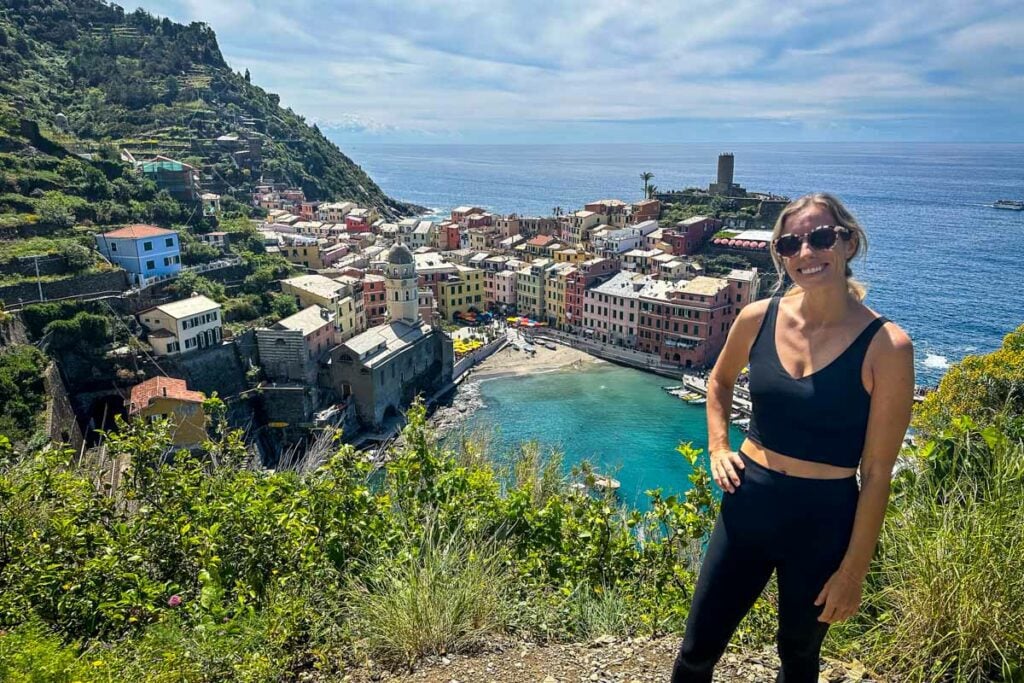
When: August – December (2009), September (2016), April-May (2018), July (2022), May (2023)
Between Katie, Ben and myself, collectively we’ve spent over 6 months living in and traveling around Italy in all different seasons. Katie and Ben studied abroad in Florence during their university years, and I’ve living in Florence as a digital nomad and also traveled around Italy 4 times so far.
Spring
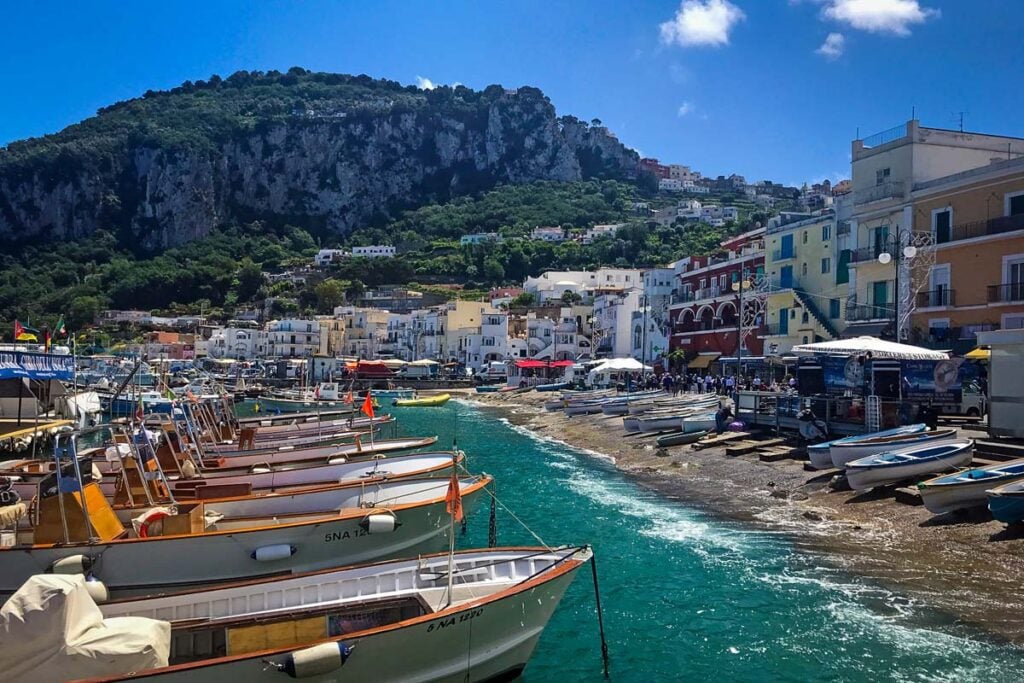
Our experience:
My most recent trip to Italy was May 2023, and the weather was extremely unseasonable during this time. Locals said it was acting more like November weather. It was rainy, cool and grey for most of the month, all over the country.
Typically May weather is really nice, warm and sunny. You can even go to the beach, though the sea water will still be warming up from the winter cool down. I experienced this during my May 2018 visit.
This was also the busiest I have ever experienced Italy (Rome, Florence, Cinque Terre and Amalfi Coast) in terms of crowds. Which is surprising given it wasn’t even “high season” yet. It was noticeably more crowded, especially on the Amalfi Coast and Cinque Terre, than the last time I was in these places in May 2018.
Would we recommend visiting Italy in spring?
Yes! Spring is a great time to visit Italy if you want to avoid the crowds of high season and still have good decent weather (from April onwards).
Summer
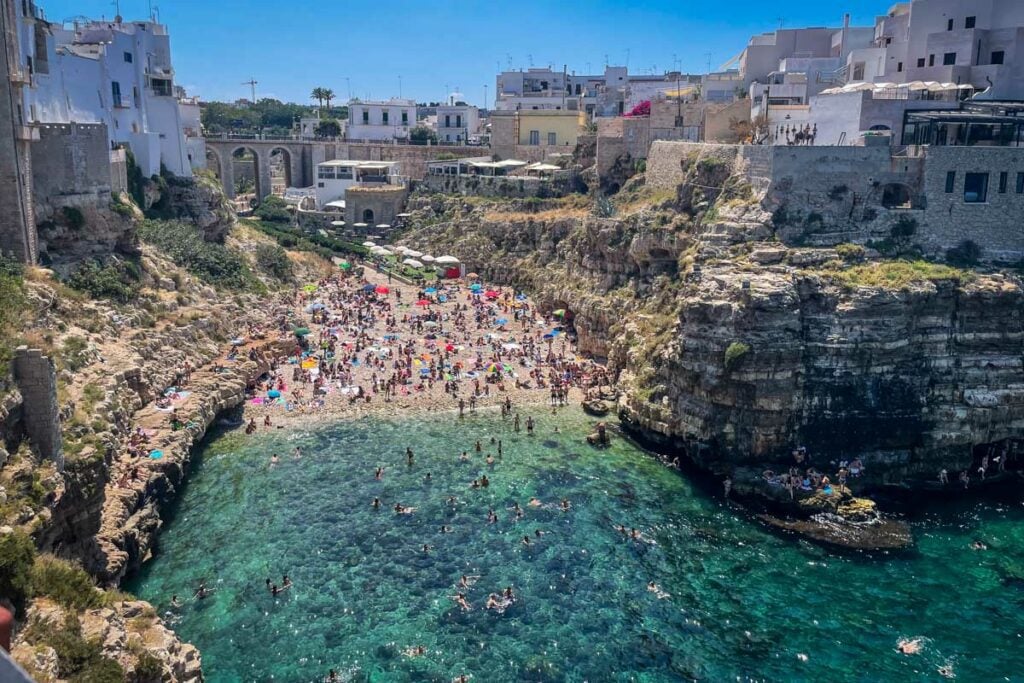
Our experience:
I traveled around the Puglia region of Italy in July of 2022 and had a great experience. This region isn’t quite as “on the beaten tourist path” yet, so while there were definitely summer crowds, it still didn’t feel too chaotic.
The weather was pretty hot and humid on the southeaster coast and frequent dips in the warm ocean were necessary to stay cool.
Would we recommend visiting Italy in the summer?
Not exactly… to avoid the heat and crowds of summer, we’d recommend you skip Italy during this time of year. If this is the only time that works for you, we’d recommend visiting lesser-known areas of Italy and avoid traveling to inland cities like Rome and Florence, which reach sweltering temps during summer.
Fall
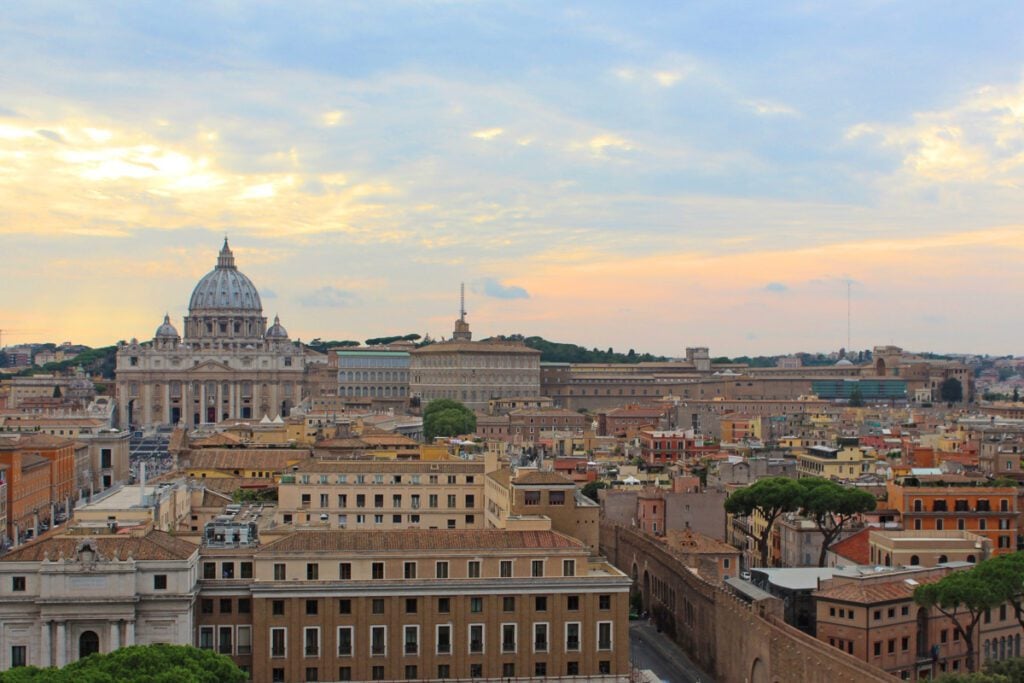
Our experience:
Katie and Ben studied abroad in Florence during the fall and really enjoyed the weather, as soon as the summer crowds died down.
I visited Italy (Rome, Florence, Amalfi Coast and Cinque Terre) for my first time in September and found the weather to be super hot in Rome, but very pleasant elsewhere, especially on the coast. Rome was still quite crowded in early September, but the crowds started to thin by the end of the month.
Would we recommend visiting Italy in the fall?
Yes! Shoulder season is our favorite time to travel to Europe and Italy is no exception. Fall is a great time to visit as temperatures stay pretty warm until mid-October and you can still enjoy the beaches without all the summer crowds.
Winter
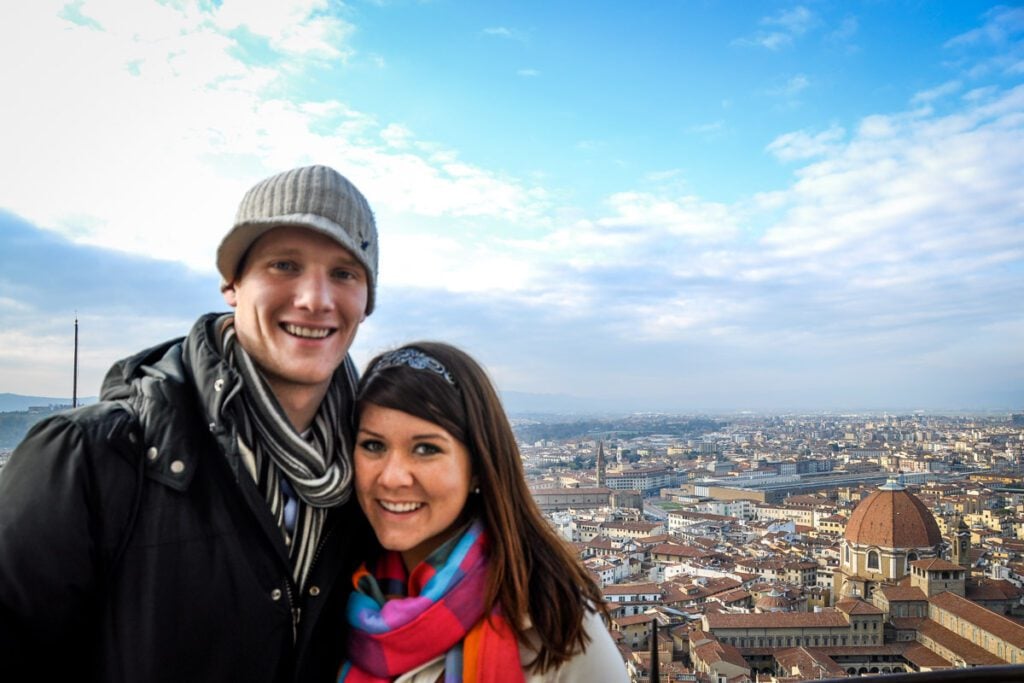
Our experience:
Small Christmas markets were fun and charming during December in Italy. However, a very light layer of snow (less than an inch) delayed many trains, taxi drivers didn’t run as they regularly do. Travel across the country ended up being very difficult.
We were trying to get from Florence to Rome to catch a flight back to the US, and what should have been just a few hours turned into an entire day due to the weather. Some of our friends ended up getting stranded for multiple days.
Would we recommend visiting Italy in the winter?
Yes, but… If your’e visiting Italy during the winter months, we’d recommend building some flexibility into your route. Otherwise, the winter can be a beautiful time to enjoy Italy with far fewer crowds than any other time of year.
Italy geography overview
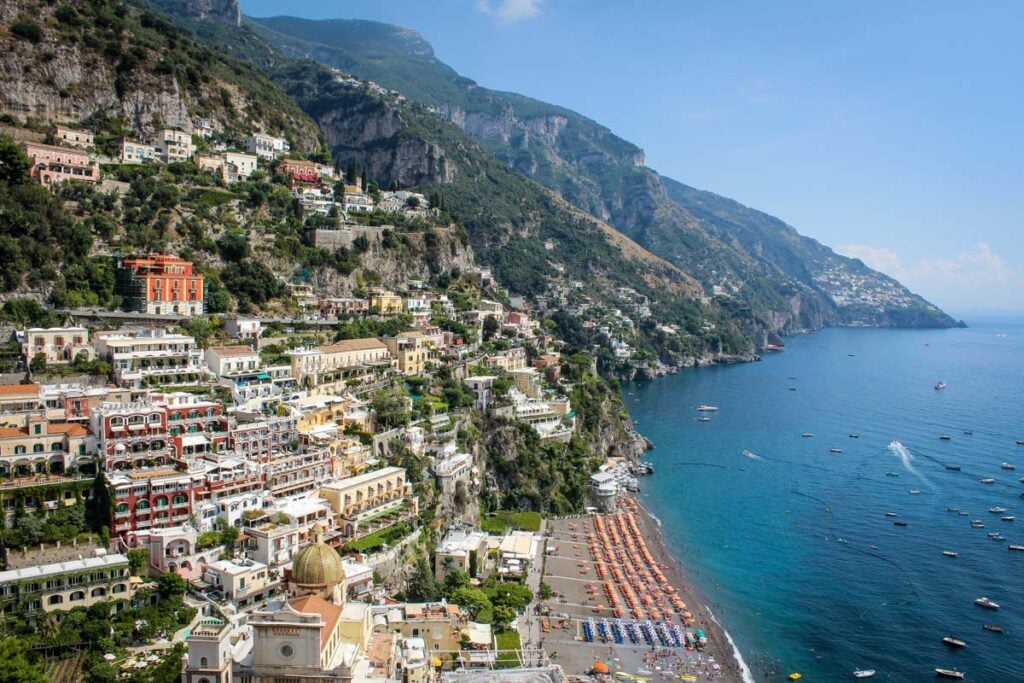
A long peninsula jutting out into the sea, Italy has an abundance of both rugged terrain and coastline. A whopping 7,900 kilometers of coastline to be exact, or about 4,900 miles!
Italy’s mountain ranges zig-zag across the country, creating numerous distinct regions with countless valleys. This unique geography is one of the biggest reasons that Italy is such a fertile agricultural and wine-producing country.
The lofty Alps in far northern Italy form its highest point, boasting spectacular rugged vistas and glacially carved valleys. There’s also the iconic Dolomites, as well as the Apennines, which run all the way down to Sicily.
Many hilly and rocky areas spur off of the main mountain ranges, so it’s fair to say that the vast majority of Italy isn’t flat. In fact, the only places that don’t have prominent peaks are the Po Valley around Milan and the area surrounding Venice!
Despite having such varied terrain, Italy’s climate is surprisingly not quite as variable, largely because the extensive coastline helps stabilize temperatures. That said, the higher altitudes in the mountains are significantly cooler overall, and get quite a bit of snow.
Weather in Italy
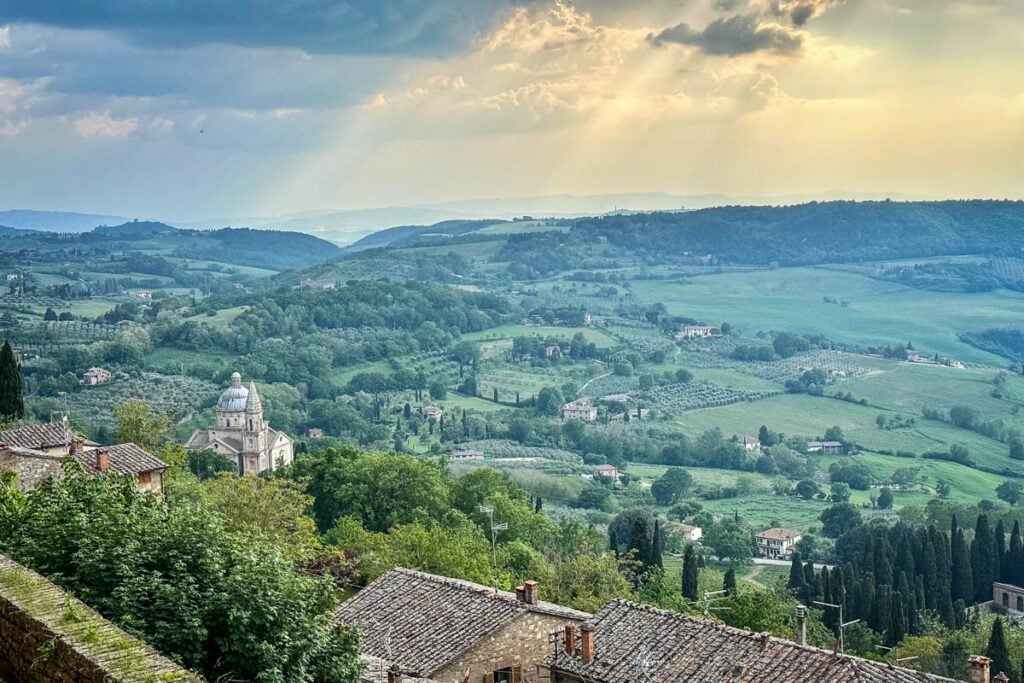
The weather in Italy is dictated by two distinct seasons: hot, sunny summers and gray, rainy winters. Most of the country experiences pleasant, mild weather in the shoulder seasons of spring and fall.
There are some exceptions and variations, especially with so many microclimates. To look at weather patterns in a generalized sense, Italy is often divided into the northern and southern regions.
The south of Italy is warmer overall year-round, and often becomes exceedingly hot during the summer. Sicily, especially, is known for extreme temperatures come July and August.
During the winter, it’s not quite as chilly in southern Italy, although rainy and cloudy days are still frequent.
Heading north, temperatures drop by 5-10 degrees Celsius (41-50 degrees Fahrenheit), and even more in the mountains. Italy’s far northern boundaries experience snow, which is a rarity just about everywhere else in the country.
The winter months are largely dreary and gloomy in northern Italy, while the summers are hot. Keep in mind the low-lying valleys, like the Po surrounding Milan, are almost always toastier than higher-elevation areas.
Stats on Italy weather & seasons
- Warmest month(s) in Italy: July – August
- Coldest month(s) in Italy: December – January
- Rainiest month(s) in Italy: November
- Driest month(s) in Italy: July
- Most crowded month(s) in Italy: July
- Least crowded month(s) in Italy: January – February
Summer in Italy
June, July, August
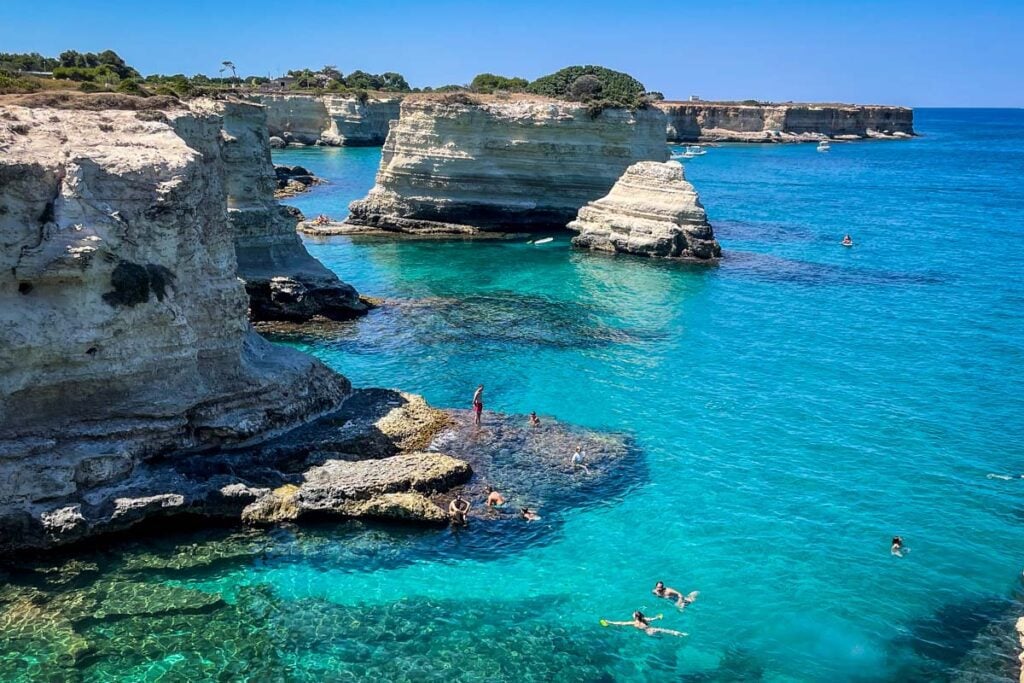
While beloved for the beaches and Mediterranean sun, be warned that Italian summers get HOT! Heat waves are common, with temperatures soaring to a sweltering 35 Celsius (95 Fahrenheit) in northern Italy, and even higher in the south – 42 Celsius (nearly 108 Fahrenheit) is not unheard of!
The tail end of the summer, late July to August, is when the weather’s at its most scorching.
Most accommodations have air-conditioning; however, be aware that it often doesn’t work well on public transportation. Unsurprisingly, most historic buildings and popular landmarks also have sub-par cooling (if any!). Dress for warm weather during a summer visit!
Rain is rare in the summer months, which is one big reason many people consider this the best time to visit Italy.
Take note of the Feast of the Assumption, which starts on August 15 and lasts two weeks. During this time, Italians pack their bags and head to the beach or the mountains. While it’s a lovely, festive time, expect many local businesses to be closed, including shops and restaurants.
With summer holidays in full swing, the country’s major tourist sights are at their most crowded. So consider following the locals – avoid the big cities and instead cool off in Italy’s natural surroundings!
Best places to visit during summer in Italy
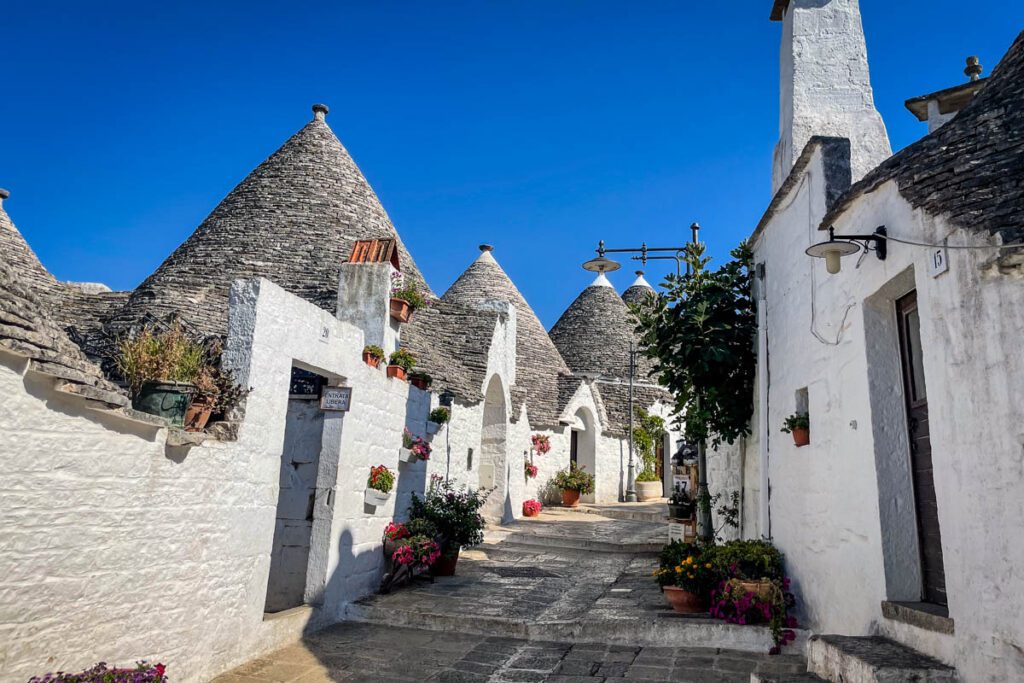
- Dolomites: explore small towns in much cooler temperatures and jump in alpine lakes to refresh
- Sardinia: beach hop, especially in June before peak tourist season starts
- Lake Como: relax on a sun-soaked patio in the Italian Alps
- Mount Etna: summer is the best time to summit this active volcano
- Puglia: enjoy incredible turquoise waters and beaches on the Adriatic Coast
- Lazio: close to Rome with both coastline and mountain villages to explore
Best things to do during summer in Italy
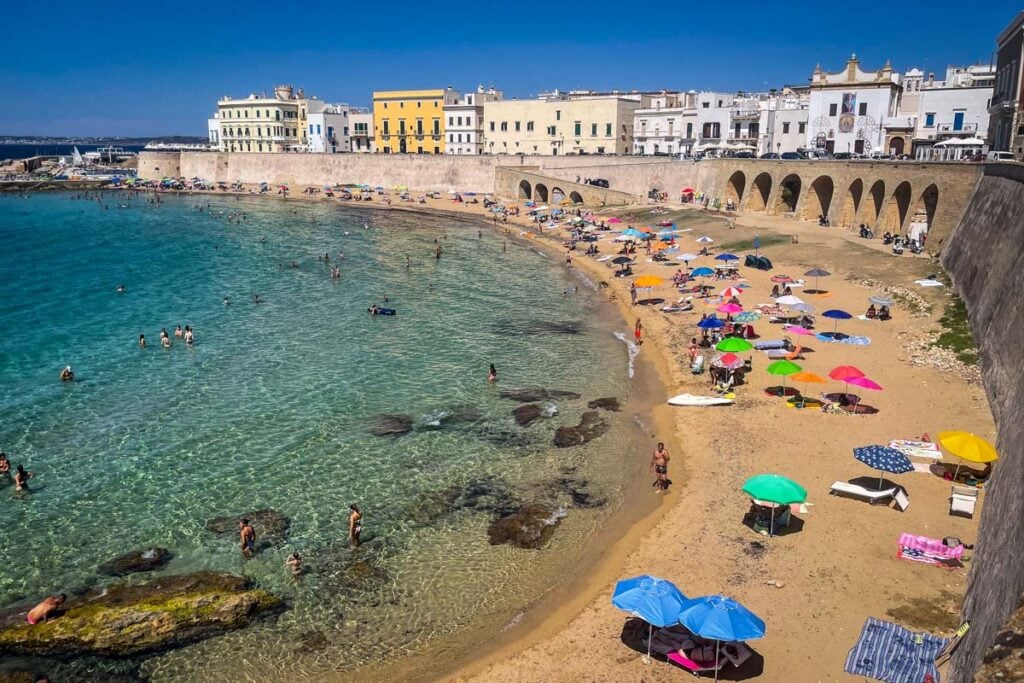
- Go hiking. The options are endless, but hiking between huts in the Dolomites is incredible.
- Experience the thrill of a via ferrata. These iron paths on hiking trails allow you to try mountaineering without any technical equipment.
- Go beach-hopping. The island of Sardinia or along the Amalfi Coast are bucket list-worthy… especially with a boat!
- Attend a summer festival. Consider the Festival of San Giovanni in Lake Como, Gioco del Ponte in Pisa, or the Marostica Summer Festival near Venice.
- Witness the Palio di Siena. This historic horse race in Tuscany is a must-see
Fall in Italy
September, October, November
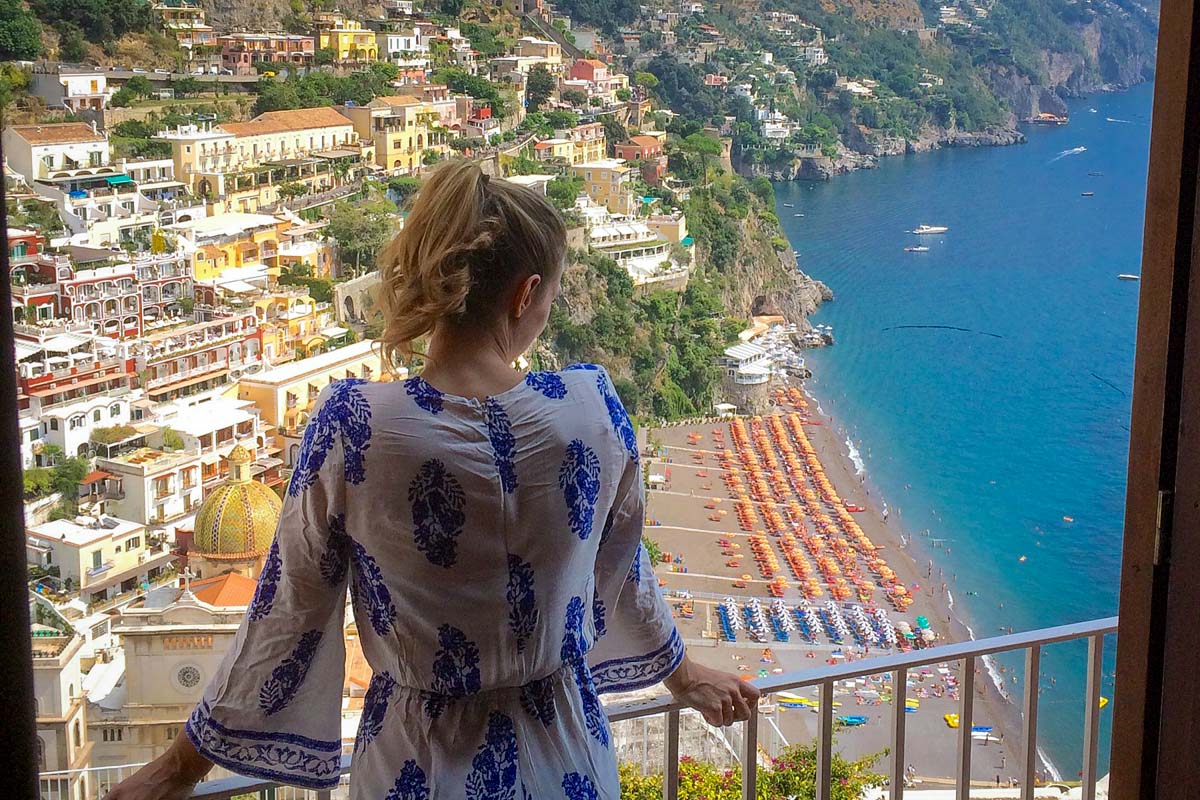
Come September, temperatures remain high, but crowds start to trickle out in many parts of the country. Cool temps finally arrive in October, followed by overcast skies and rain beginning in November, Italy’s wettest month overall.
November also happens to be grape harvest season, so wine regions are busy with visitors and festivals.
Although hiking season in the Alps nears its end in fall, the Mediterranean coast remains warm and mostly sunny, so it’s a great time to explore islands or seaside destinations. Inland, there’s a noticeable return to everyday life as big cities lose much of their tourist bustle.
Fall is one of the best times to visit Italy in just about any region, but especially the south. The sun’s heat lingers on, providing that iconic Mediterranean vibe. Plus, accommodation prices drop drastically starting in mid-October, and you don’t have to book so far in advance.
If you’re visiting later in the season, it’s a good idea to prepare a “Plan B” in case of inclement weather, regardless of where in the country you’re headed.
Best places to visit during fall in Italy
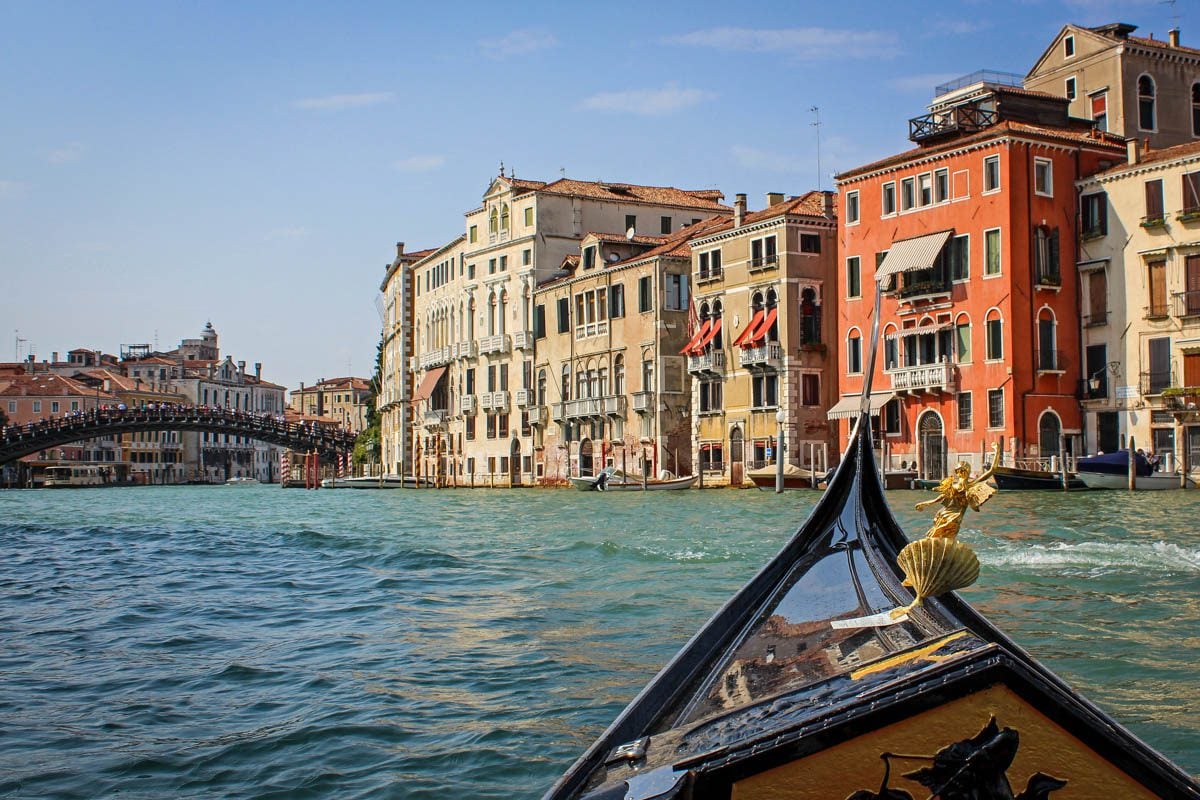
- Venice: the weather is absolute perfection in late fall
- Sicily: for vast diversity, from active volcanoes to dreamy beaches
- Matera: see the incredible cave dwellings
- Amalfi Coast: soak up the last bit of summer (and cooler temperatures!)
- Pompeii: the famous ruins have a bit of a quiet period in late fall
- Verona: wander through Italy’s city of love
Best things to do during fall in Italy
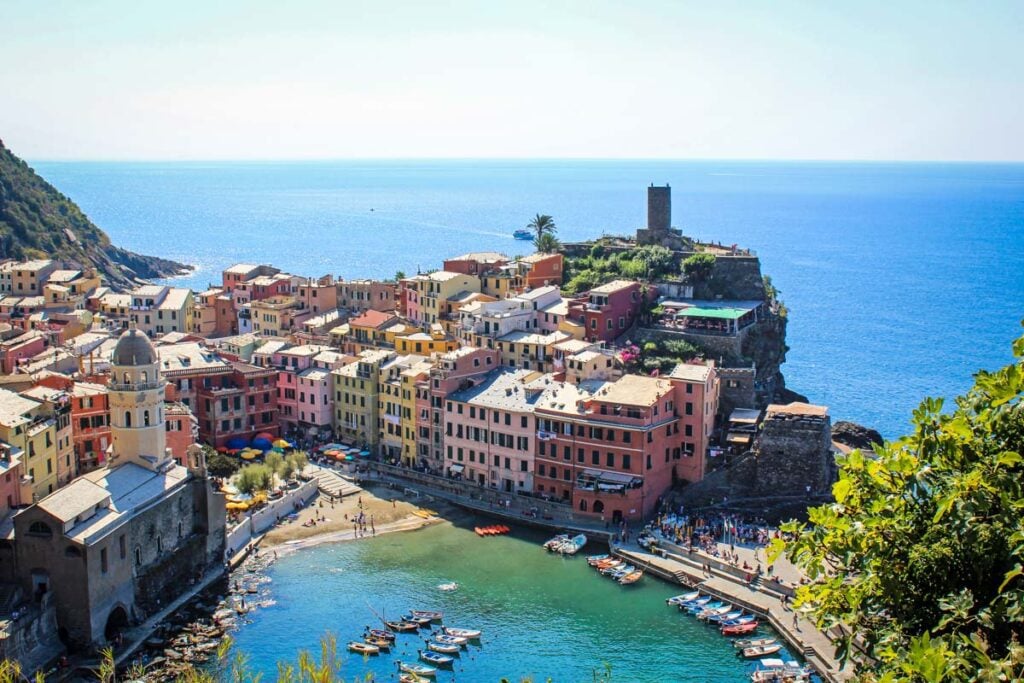
- Celebrate Naples’s patron saint at the Festa di San Gennaro. Held September 19, this is one of the region’s most important festivals. Book accommodation in advance!
- Hike Cinque Terre. Explore the quaint seaside villages with far fewer crowds.
- Road trip through the Tuscan countryside. Colorful autumn scenery is your backdrop for Sangiovese and Merlot harvests, plus the Tuscan Boccaccesca Food and Wine Festival.
- Photograph the unique houses of Alberobello. Known as trulli, these distinct stone huts with cone-shaped roofs only exist here.
- Catch celebrities at a film festival. October’s Venice International Film Festival or Rome Festival are both great choices, and this is a wonderful time to explore the cities.
Winter in Italy
December, January, February
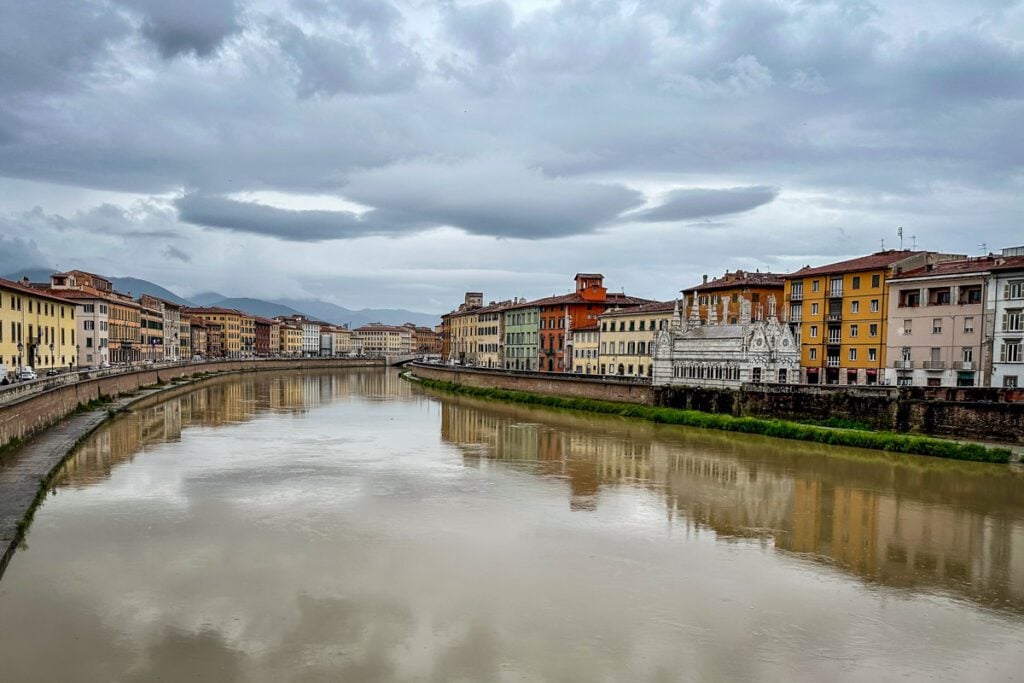
Most regions in Italy aren’t highly sought-after sunny winter destinations; however, it tends to be significantly warmer than many other places in Europe. That makes it a bit of a hidden gem from a tourist standpoint, so depending on your plans, this might be the best time to visit Italy!
To be clear, winter is Italy’s rainy season, but keep in mind that it’s still a Mediterranean country with a mild overall climate.
Many places are cold and rainy during the winter, very windy (especially on the coast), and of course, the mountains get substantial snowfall. The climate in southern Italy is milder than the north, but still wet. Nevertheless, the sun peeks through the clouds on most days.
In January and February, accommodation prices and crowds are at their lowest across the country. If you don’t mind wearing a jacket and bringing an umbrella to go sightseeing, it’s a fantastic time to avoid the usual commotion!
One of the biggest things to be aware of for a winter visit is that outdoor and coastal activities may be somewhat limited. For example, many tours and boats don’t operate in winter’s off-peak months. The trade-off of lower crowds is well worth it, though.
Plus, there’s skiing in the Alps, and the towns in the north look magical under a blanket of snow. Italy can actually be a pretty dreamy winter wonderland if you go to the right region (aka the north).
Italians also love Christmas, and celebrate many other winter holidays. Some have fun city-wide festivities, while others lead to extended business closures — check directly with any specific place you hope to visit before booking your trip.
On the flip side, winter is a wonderful time to hit major tourist attractions like those in Rome, Pisa, and Venice, as they tend to be much less crowded than during peak season.
Best places to visit during winter in Italy
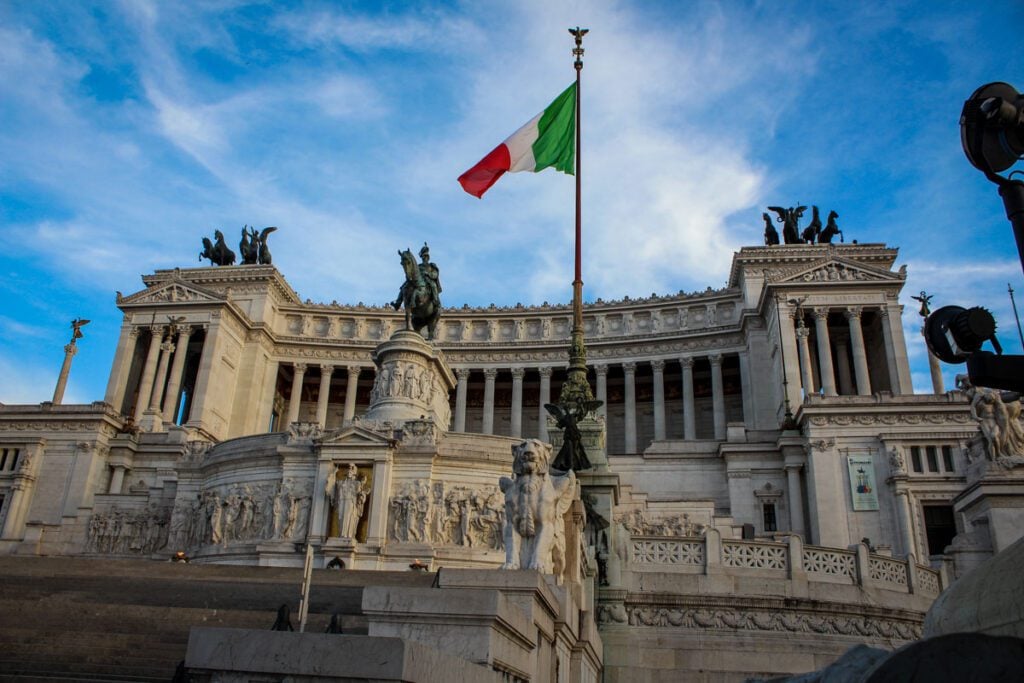
- Milan: shopping and attractions like the historic opera are well-suited to any weather
- Dolomites: the South Tyrol region looks magical in snow
- Puglia: beautiful Puglia is sunny and mild in the winter
- Trieste: this port city boasts 200+ wind-free days – a rarity!
- Turin: known as the “Detroit of Italy” and famous for its Christmas decor
- Rome: the same experience you’d have other times of year, but with far less people
Best things to do during winter in Italy
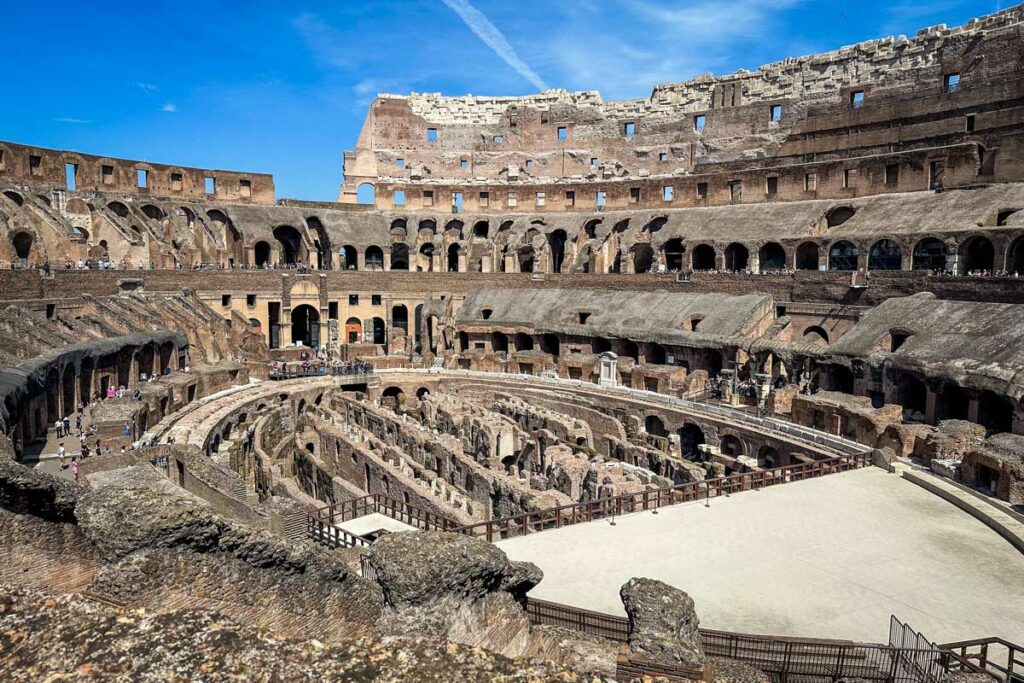
- Attend a magical Christmas market. Held in numerous cities, though the Bolzano and Milano markets are especially good.
- Go skiing. Charming alpine towns like Cortina d’Ampezzo will make you want to stay longer.
- Visit piazzas to experience Italy’s Christmas spirit. Most piazzas in major cities and tiny villages alike are decked out in Christmas decorations throughout December.
- Peruse the Alba White Truffle festival. Indulge in rich, quintessential Italian food.
- Explore the capital city’s ancient sites. Winter is the best time to visit Rome, particularly for touring the always-popular historic sites and architecture.
- Dip into hot springs in Saturnia.
- Tour Venice. Specifically, explore the islands of the Northern Lagoon.
- Take a cooking class or food tour
- Learn how to make pasta in Florence
- Do a cooking class in the Tuscan countryside
- Join a Tuscan wine tour
- seek out the best pasta in Milan on a tour or on your own
Spring in Italy
March, April, May
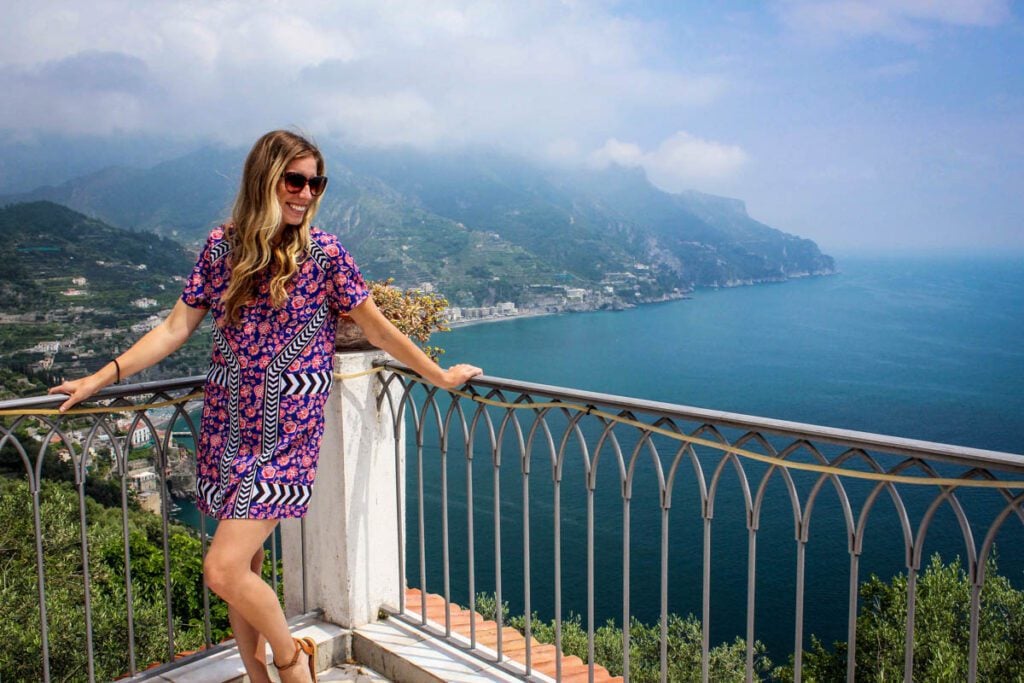
Once spring rolls around, Italy bursts into vibrant, colorful life.
While a few showers linger through March, April and May bring picture-perfect weather with sunny skies and lush greenery. Temperatures are comfortable all season long, perfect for hiking and exploring outdoors.
Businesses, attractions, and tours are all open again after the winter low season. Plus, Italy hosts many spring festivals, including Easter celebrations, creating a particularly lively environment.
Foodies will be in heaven, as spring in Italy means harvest season for olives and lots of local produce. Everywhere you go, especially in agricultural valleys, you’ll find fresh produce stands and small food festivals.
Although spring is the best time to visit Italy for a little bit of truly everything, the season’s magic is not so secret. Prepare for higher prices country-wide and lots of other tourists.
In spite of that, a spring visit is worthwhile for such comfortable conditions. Just pack a rain jacket for those sporadic spring showers, and plenty of patience for the crowds.
Best places to visit during spring in Italy
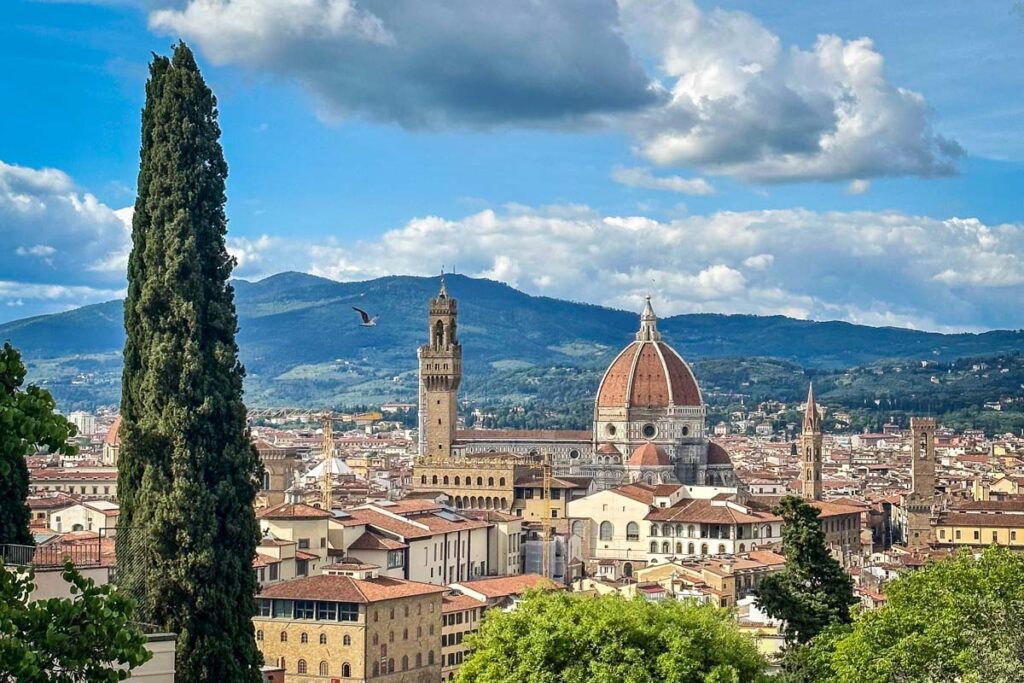
- Rome: spring weather is perfect for discovering the capital’s famous historic sites
- Trentino: the heart of Italy’s extreme sports culture
- Naples: discover the city’s ancient streets (and incredible pizzerias!) with fewer crowds
- Bologna: explore on foot to work off the calories of the fabulous cuisine
- Florence: see the major cultural sights and experience the city’s cherry blossom season
- Genoa: wander through the tiny alleyways
- Molise: a little-known region with amazing spring skiing
Best things to do during spring in Italy
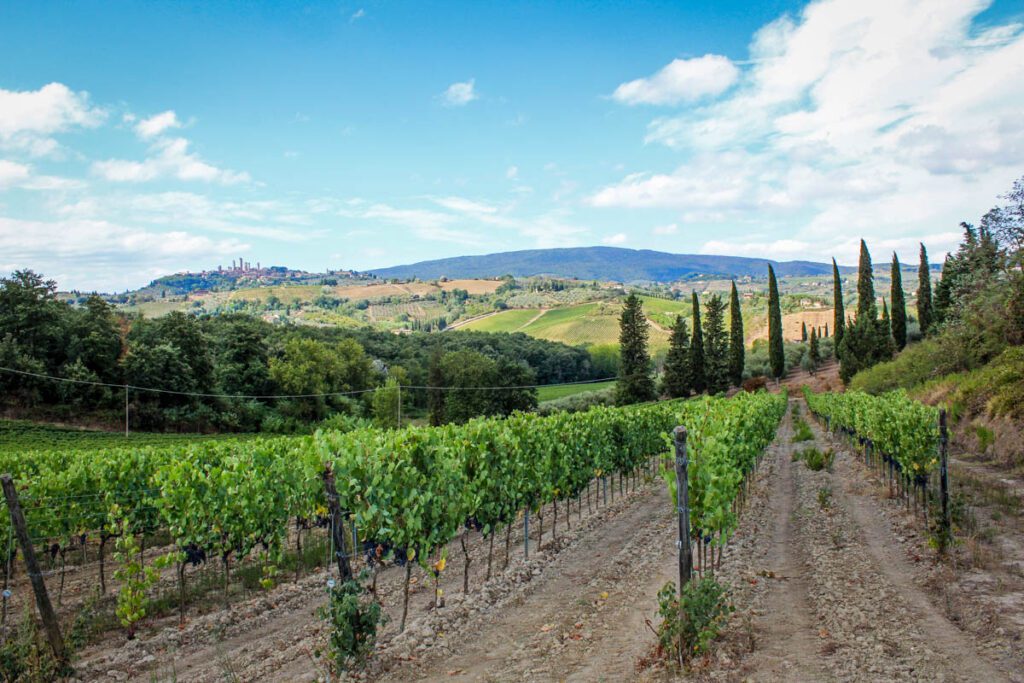
- Take a once-in-a-lifetime campervan road trip.
- Witness Rome’s spectacular Easter procession.
- Celebrate Easter Monday. Italians celebrate Easter as a long weekend, road-tripping to beautiful outdoor spots and bringing picnic lunches along on Monday.
- Go on a truffle-hunting tour just outside of Florence. (This tour has rave reviews and sounds like a once-in-a-lifetime experience!)
- Explore the underrated Umbria region. Drink wine, hike, repeat.
- Catch the Carnevale Acireale in Sicily. This lively, colorful carnival happens in late February.
- Take a food-focused road trip through central Italy. Look for produce stands, food vendors, and seasonal displays in shops with wild asparagus, figs, apricots, chestnuts, and berries.
- Attend the fragrant Almond Blossom Festival in Agrigento. This early March celebration in Sicily is tasty and scenic.
- Indulge at the artichoke festival. Honor wild produce season in Ladispoli from April 12-14.
Best time to visit Italy in our opinion…
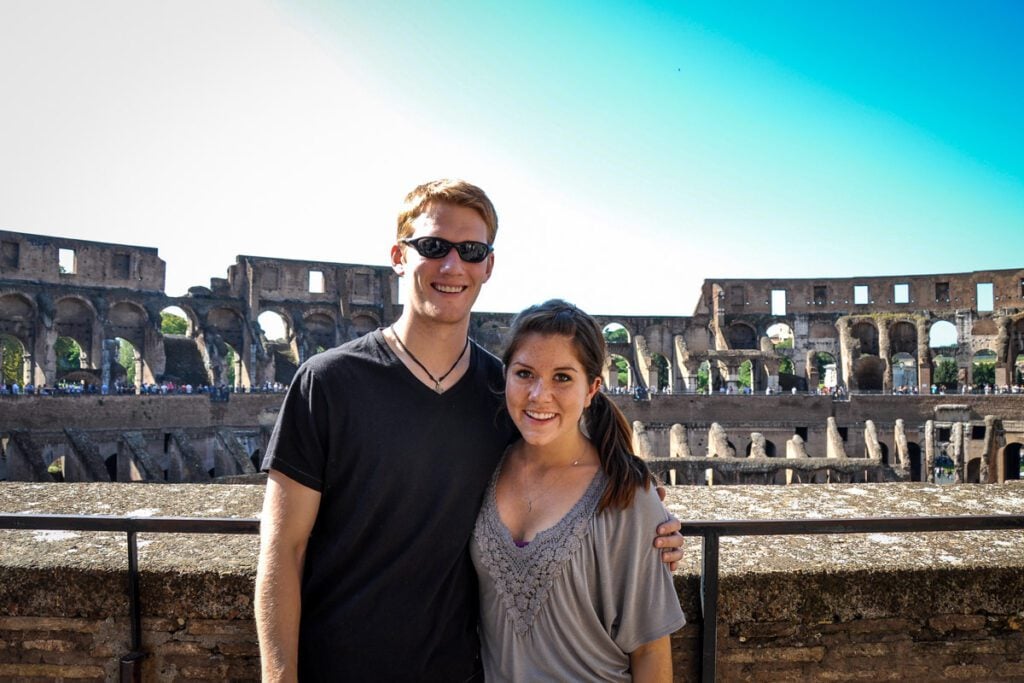
In our opinion, the best time to visit Italy overall is during the shoulder season: either September – October or April – May.
The weather is pleasant and sunny, but not hot. There are noticeably fewer crowds, and less pressure to book accommodation and major attractions far in advance (not to mention at more affordable price points!).
However, it also depends on your specific interests. It’s much cooler in the mountains in the summer, and there are fewer storms to disrupt any plans, so this is one of the best times to hike in the Dolomites.
Likewise, if you’re planning a classic beach getaway in Sardinia or Capri, it’s hard to beat the warm summer sun.
Fall and spring are ideal for exploring major cities and taking a road trip. There are harvest festivals and other fun celebrations in both seasons, as well as plenty of sun. Plus, in September and May, beach time is still pleasant!
Come wintertime, the skies turn gray and rain is frequent. While not always picture-perfect, this is the best time to visit Italy for travelers hoping to save on accommodation and avoid crowds. Plus, northern Italy offers winter wonderland experiences, like skiing and Christmas markets.
What to pack for your trip to Italy
We know it can be overwhelming packing for a trip to a new destination. That’s why we spent hours creating this super helpful PDF just for you.
In this free Italy packing list PDF download, we’ve provided packing checklists for everything from clothing and toiletries (for both women and men!) to what shoes to pack and extra medicines you may want to have on-hand just in case.
Plus, we’re sharing tons of packing hacks and tips for traveling in Italy that you won’t find anywhere else!
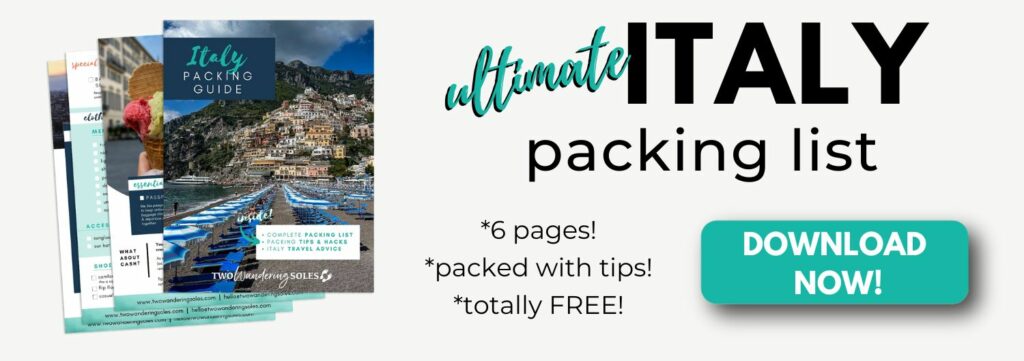
Planning a trip to Italy?
We have lots of resources on travel in Italy and destinations throughout the country. Check out our Italy Homepage for everything you need to know, or start by reading some of our favorite Italy articles here:
- Perfect Italy Itineraries
- Best Things to Do in Rome (on your first trip!)
- Unforgettable Things to Do in Positano
- Best Day Trips from Florence
Save this article on Pinterest for later!

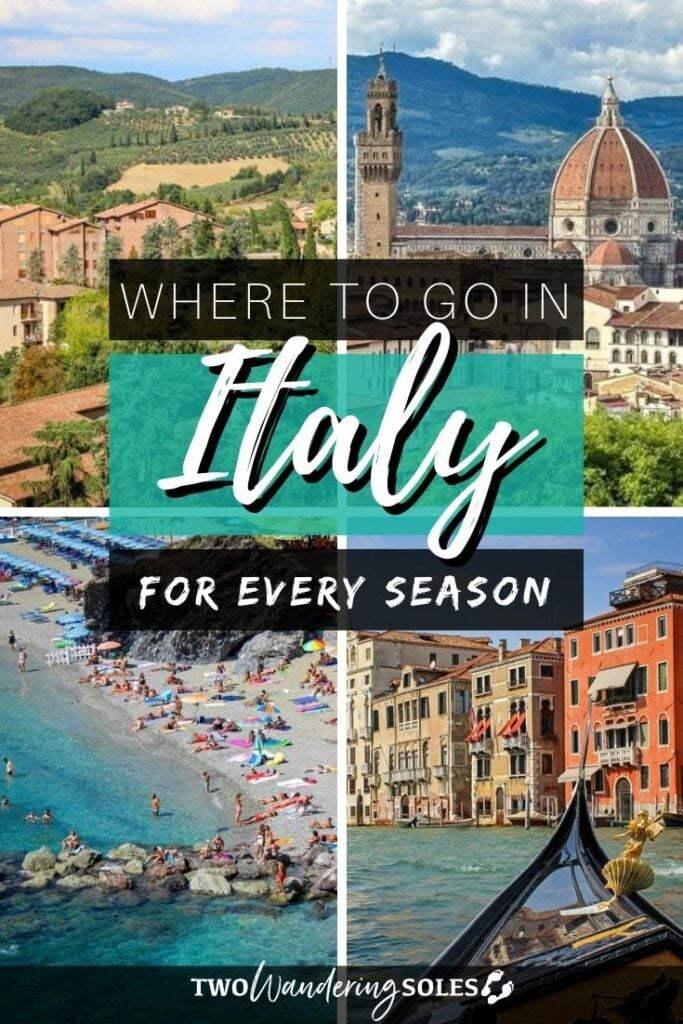
We want to hear from you!
Have you been to Italy before? What was your experience like? Have more questions about the best time to visit Italy? Leave your comment below and we’ll do our best to get back to you!

I am in Italy now; September 2024 and it is very rainy. I would say I have experienced a thunderstorm with heavy rains every 3 days. I am in southern Italy now, but the pattern was in northern Italy, too. Ravenna, Napoli, isle of capri. All heavy rains. Forecast is more rain this week, too. September is very rainy time to visit.